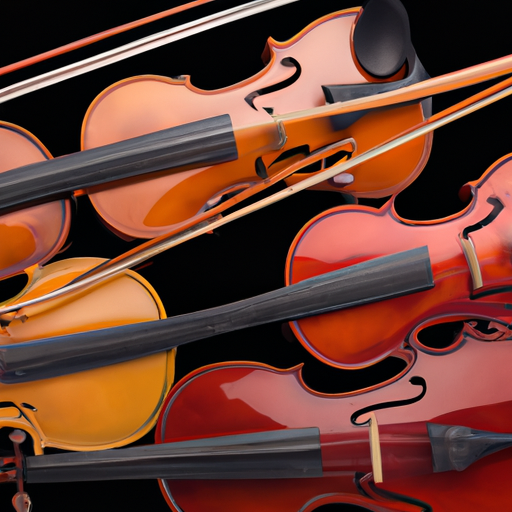
Playing the violin requires not just skill, but also the right equipment. In addition to the instrument itself, one of the most important pieces of equipment is the bow. The right bow can make all the difference in the sound you produce, so it’s important to choose the right type of bow for your playing style. Here are the different types of violin bows you should know about:

A violin bow is a long, narrow stick made of wood or other materials that is used to create sound when it is dragged across the strings of the violin. The bow is held in the right hand and is moved back and forth over the strings to create different notes and sounds. Choosing the right type of bow is essential for producing the best possible sound.

The violin bow consists of several parts, including the stick, the frog, the hair, and the tip. The stick is the long, narrow part of the bow that is held in the right hand. The frog is the part of the bow that holds the hair in place, and it is usually made of ebony or another dense wood. The hair is made from horsehair and is stretched across the bow between the frog and the tip. Finally, the tip of the bow is the pointed end that goes over the strings.
Each part of the bow affects the overall performance of the bow. The stick determines the weight and balance of the bow, while the hair affects the sound quality and volume. The frog and tip are also important for creating the right sound and for ease of use.
There are several different types of violin bows to choose from, each with its own unique characteristics and history. Here is an overview of the different types of violin bows:
Pernambuco violin bows are considered by many to be the best type of bow available. They are made from the wood of the Pernambuco tree, which is native to Brazil. These bows are known for their superior strength, flexibility, and responsiveness, which makes them ideal for professional violinists. Pernambuco bows also produce a warm, rich, and nuanced sound, making them a favorite among musicians and collectors alike. However, Pernambuco bows are also the most expensive type of bow, with prices ranging from several hundred to several thousand dollars.
Carbon fiber violin bows are a more modern alternative to traditional wooden bows. They are made from a composite material that is strong, lightweight, and durable. Carbon fiber bows are also more affordable than Pernambuco bows, making them a popular choice among beginner and intermediate violinists. While they do not produce the same warm, rich sound as Pernambuco bows, they are still capable of producing a clear and precise sound. Carbon fiber bows are also less susceptible to changes in humidity and temperature, which makes them ideal for outdoor performances.
Snakewood violin bows are made from the wood of the snakewood tree, which is native to Central and South America. These bows are known for their distinctive grain patterns, which resemble the scales of a snake. Snakewood bows are also known for their strength and durability, as well as their warm and rich sound. While they are not as expensive as Pernambuco bows, they are still considered a high-end option, with prices ranging from several hundred to several thousand dollars.
Brazilwood violin bows are made from the wood of the Pernambuco tree's cousin species, which is also native to Brazil. These bows are a more affordable alternative to Pernambuco bows, with prices ranging from under $100 to a few hundred dollars. While they do not produce the same warm, rich sound as Pernambuco bows, they are still capable of producing a clear and bright sound. Brazilwood bows are also lightweight and easy to handle, making them a popular choice among students and beginner violinists.
Fiberglass violin bows are the most affordable type of bow, with prices ranging from under $50 to a few hundred dollars. They are made from a composite material that is strong, durable, and easy to maintain. While they do not produce the same warm and nuanced sound as wooden bows, they are still capable of producing a clear and precise sound. Fiberglass bows are also resistant to changes in humidity and temperature, which makes them a good choice for outdoor performances.
When choosing a violin bow, there are several factors to consider. First, consider your playing style and the type of sound you want to produce. Second, consider the weight, balance, and stiffness of the bow. Finally, consider your budget and the level of your playing. If you are a beginner, a more affordable bow may be sufficient, while more advanced players may want to invest in a higher-end bow.
Choosing the right type of violin bow is essential for producing the best possible sound. While Pernambuco bows are considered the best type of bow, there are several other options to choose from, including carbon fiber, snakewood, Brazilwood, and fiberglass bows. Consider your playing style, budget, and level of playing when choosing a bow, and remember that the right bow can make all the difference in your sound.
For more information about violin bows and to rent or purchase a high-quality Pernambuco violin bow, visit https://bannhacflamenco.net/cho-thue-ban-nhac/luom-lat-tin-do-day/.